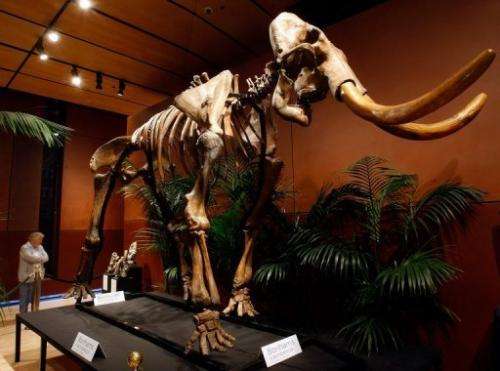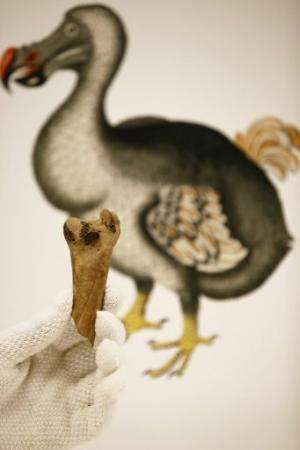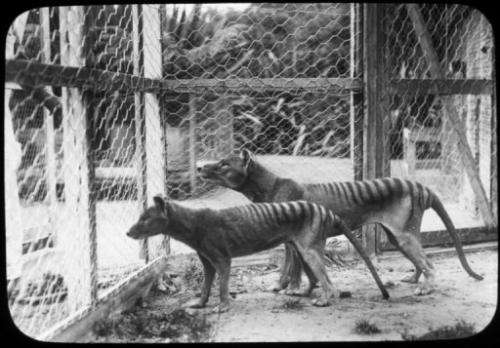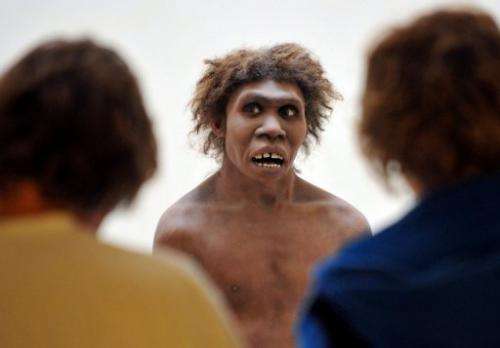Reverse extinction: Should we redo the dodo?

Woolly mammoths stomp through the Siberian tundra as the giant moa strides the forest floor of New Zealand and Tasmania's dog-like "tigers" stalk their prey under the cover of night. This is not a snapshot of times past, nor next year's sequel to Steven Spielberg's "Jurassic Park." Instead, it is a scenario that some biogeneticists see as plausible in our own lifetimes: the resurrection of species driven to extinction, sometimes thousands of years ago.
Next Thursday will be 60 years since Francis Crick and James Watson published their paper unveiling the structure of DNA, the double-helix genetic code for life.
Today, some experts believe that by harnessing this breakthrough knowledge, the first extinct species could be revived within years.
They could be cloned from genetic material teased from preserved tissues, with the reprogrammed egg implanted in a cousin species.
Farther down the road, other species could live again through artificially-reconstituted sequences of their DNA, goes the argument.
"For the gastric frog it would take maybe a year or two years. For a mammoth maybe 20, 30 years, maybe sooner," evolutionary geneticist Hendrik Poinar of Canada's McMaster University told AFP of ongoing "de-extinction" efforts.

In 2009, researchers announced they had cloned a bucardo, also called a Pyrenean Ibex, using DNA taken from the last member of this family of Spanish mountain goats before she died in 2000.
This was the first cloned animal born from an extinct subspecies, but the success was mixed—the kid, borne by a domestic goat, died within 10 minutes from a lung abnormality.
Just last month, a team at Australia's University of New South Wales said they had cloned embryos of the gastric-brooding frog which died out in 1983 and was named for its weird reproductive technique of swallowing its eggs, brooding them in its stomach and then spitting out the offspring.
The cloned embryos all died within a few days.
Australian teams are also working on reviving the Tasmanian tiger with DNA obtained from an ethanol-preserved pup of the dog-like, marsupial predator that died out in the 1930s.
In Japan, geneticists said in 2011 they planned to use DNA from frozen carcasses to resurrect within six years the woolly mammoth which died out during the last Ice Age.
And in Britain, Oxford University scientists have obtained genetic data from museum-held remains of the dodo, the flightless Indian Ocean island bird hunted to extinction by 1680.
Scientists believe reconstruction would be feasible for most animals for which DNA has survived, possibly going back 200,000 years—a limit that would exclude a "Jurassic Park"-like revival of the dinosaurs.

The DNA sample would have to be well preserved and techniques would have to improve to reduce the risk of deformity, miscarriage and premature death, a characteristic of animal cloning today.
"The way it is going now, I can see why people would imagine it (de-extinction) is possible," said Poinar.
"I could envision that if there were no laws preventing it and the ethics had been worked, out, swathes of land in Siberia repopulated with mammoths and cave lions.
"The discussion is really: 'Should we?'"
London School of Economics sociologist Carrie Friese fears that ethics have been left by the wayside in the rush to resurrect.
"My concern is that the focus is too much on: 'Can we do this?' rather than what we do with the living being that is the result," she said.
Many animals went extinct exactly because their natural habitats were destroyed, said Friese.
Lacking a broad gene pool to adapt to the wild, their cloned progeny could find themselves doomed to life as museum exhibits. Nor would they have authentic parents to socialise them or teach them to how to fly, forage or hunt.

"An animal is more than its genome," said Friese. "How does a dodo learn to be a dodo?"
Stanford University bioethicist Hank Greely is one of those who enthusiastically favour species resurrection.
"I think the strongest reason to do it is just that it would be awesome," he said. "It would be seriously cool."
But he also cautioned against inflicting inappropriate, excessive pain and suffering in the scientific quest.
For this and other reasons, Neanderthal cloning, which would most likely involve a human surrogate, remains off limits—even though high-quality genetic data is available.
Others say de-extinction efforts divert time and money from preserving endangered species.
"Reconstitution of extinct species is of limited conservation value and could even be a distraction," said Colman O Criodain of conservation group WWF.
But there are also potential benefits: a harvest of knowledge from studying living versions of extinct animals, and potential environment spinoffs too.
Some believe returning mammoths to Siberia could turn the barren, mossy tundra back into the fertile grasslands it was thousands of years ago.
And technology may help us develop methods to add genetic diversity for species on the brink today.
Transparent debate, not scientific stealth or hubris, offers the only path through this ethical minefield, said Poinar.
"What it really comes down to is having a very poignant and honest discussion about what really are the reasons, what are the pros and what are the cons of it," he said.
(c) 2013 AFP













.jpg)






